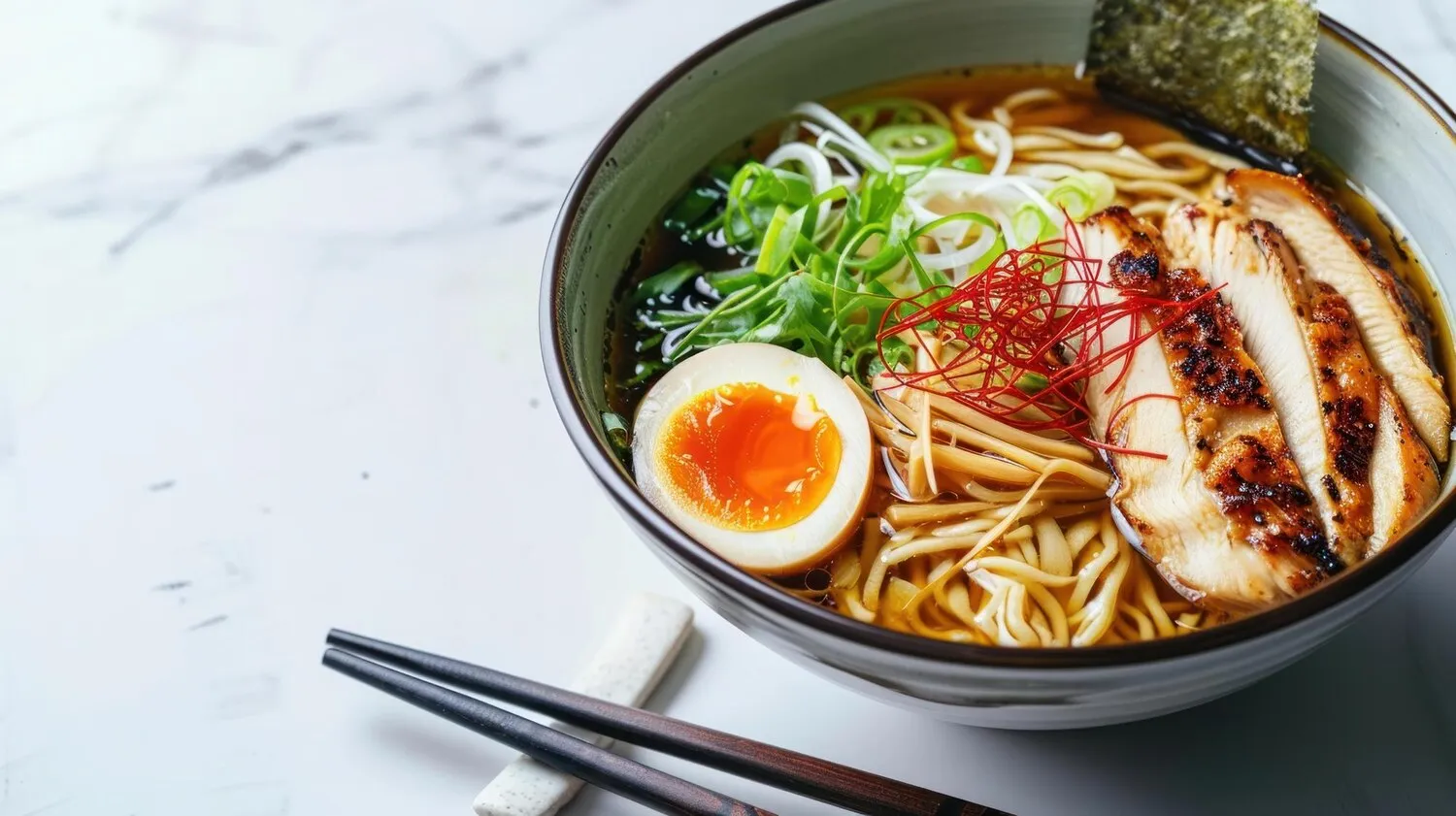
Ramen
Manga offers flavorful ramen dishes with different broths and toppings. It's one of their popular meals.
Nutrition Facts
* The % Daily Value (DV) tells you how much a nutrient in a serving of food contributes to a daily diet. 2,000 calories a day is used for general nutrition advice.
Ramen's origins can be traced back to Chinese noodle dishes. It was introduced to Japan in the late 19th or early 20th century, becoming increasingly popular after World War II due to wheat flour being introduced into the market. Over time, Japanese chefs adapted and refined the dish, creating distinct regional variations and styles.
Ramen is a deeply ingrained part of Japanese food culture, representing both a quick, affordable meal and a culinary art form. Ramen shops are ubiquitous, each often specializing in a particular regional style or broth.
Ramen Shops (Ramen-ya)
Ramen shops are a central part of the ramen experience. Slurping ramen is considered polite and enhances the flavor. Many shops offer customization options, allowing customers to choose the noodle firmness, broth richness, and toppings.
Regional Variations
Japan boasts numerous regional ramen styles, each with its unique characteristics. Examples include Hakata ramen (tonkotsu broth), Sapporo ramen (miso broth), and Kitakata ramen (soy sauce broth).
Instant Ramen
Instant ramen is a globally popular and affordable food product, inspired by the original dish, and a major part of food culture for many.
Ramen offers a diverse range of flavors, primarily driven by the broth and tare (seasoning sauce). Common flavors include savory, umami, salty, and sometimes sweet or spicy notes, depending on the ingredients and regional style.
The broth is the foundation of ramen's flavor, often made from pork (tonkotsu), chicken (chintan), seafood, or vegetables. The tare, usually soy sauce (shoyu), miso, or salt (shio) based, seasons the broth. Common toppings like chashu (braised pork belly), menma (bamboo shoots), nori (dried seaweed), scallions, and a soft-boiled egg (ajitsuke tamago) add further layers of flavor and texture.
Slurping Technique
Slurping aerates the noodles, enhancing their flavor and helping to cool them down. It's considered a sign of appreciation in Japan.
Broth Etiquette
Drinking the broth is generally accepted and encouraged. It's a way to savor the complex flavors and show appreciation for the chef's efforts. Don't be afraid to lift the bowl to your mouth to drink the broth.
Customization
Don't hesitate to customize your ramen order based on your preferences, if the option is available. Explore different toppings, noodle firmness, and broth richness levels to find your perfect bowl.
Eating Speed
Ramen is best enjoyed quickly while the noodles are still firm and the broth is hot. Letting it sit for too long will cause the noodles to become soggy and the broth to cool, diminishing the overall experience.
Explore additional Noodle Soup dishes and restaurants
Explore Noodle SoupDiscover top dining spots and culinary experiences in Bregenz.
Explore BregenzLearn more about the food culture, restaurant scene, and culinary heritage of Austria.
Explore Austria